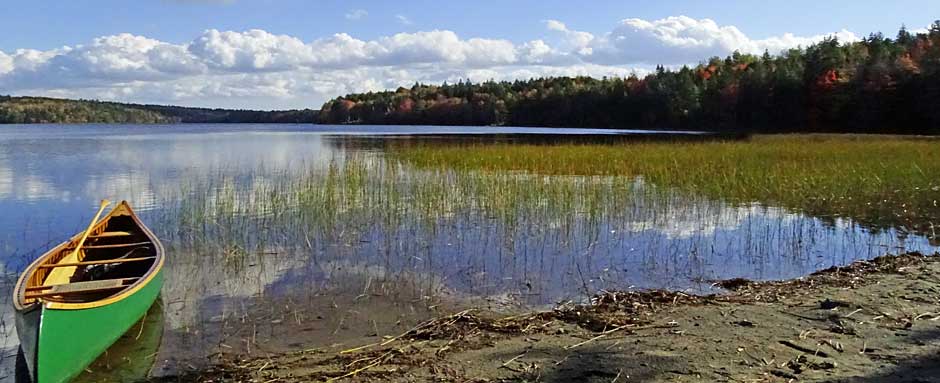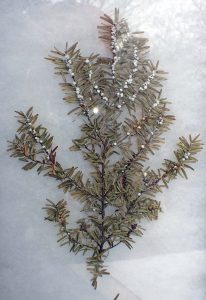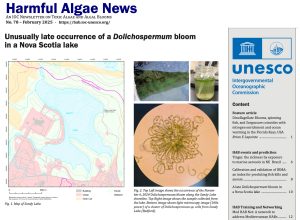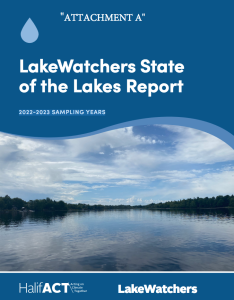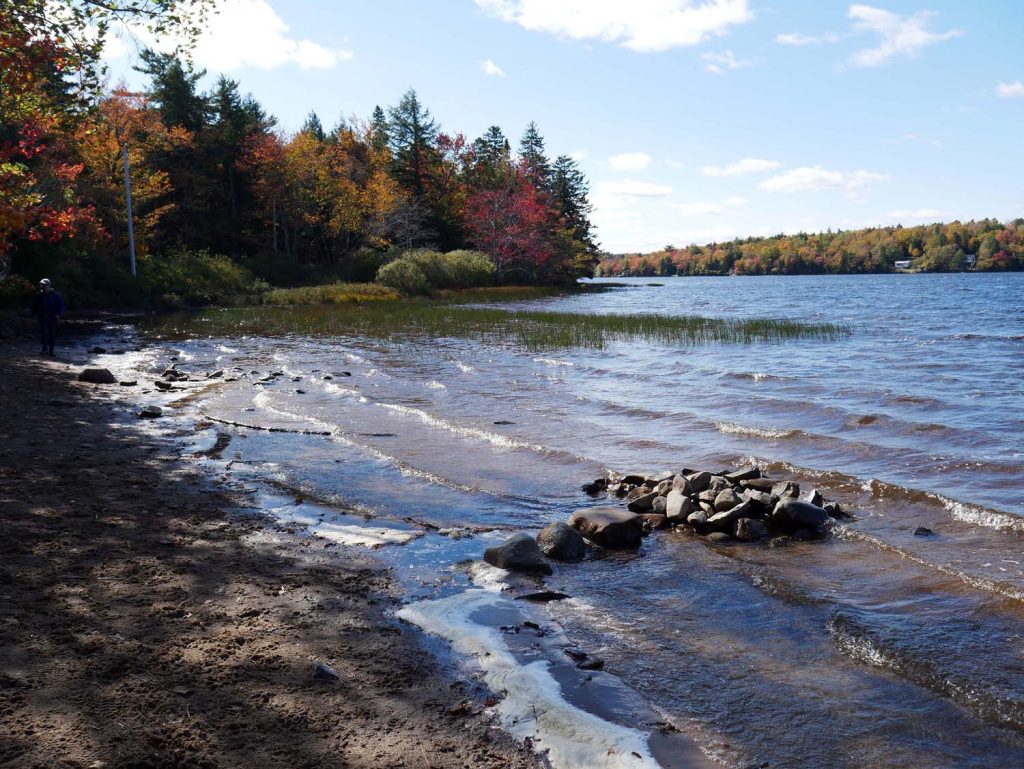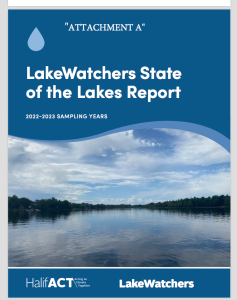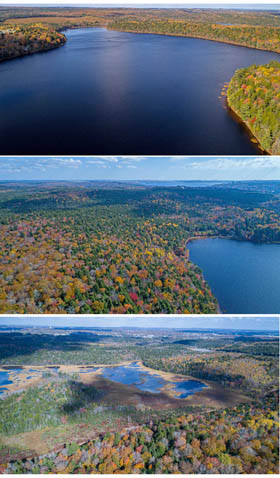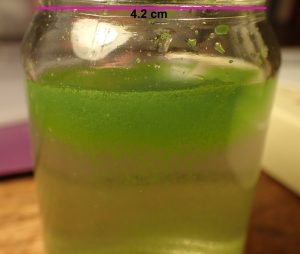
Bottle with Sandy Lake water
Click on images for larger version. Viewed at max size, individual clumps of cells/colonies appear as small beads – approx 0.25 mm diameter, they can just be discriminated with the naked eye.
Circumstantial evidence suggests the appearance of “green aggregations” on the shoreline on the west side of the lake followed fall turnover of the water column, bringing up phosphorus-rich water from the hypolimnion which stimulated growth of a nitrogen-fixing BGA (Cyanobacterium), the ID confirmed by specialists to be Dolichospermum flos-aquae.
On Thursday, Nov 7th of 2024, D.S., a resident of Sandy Lake, arrived at my doorstep with a small bottle of Sandy Lake water he had collected along the shore on the west side of the lake in the late afternoon of Nov 6th.
It had a very distinctive layer of green near its top (pic at right).
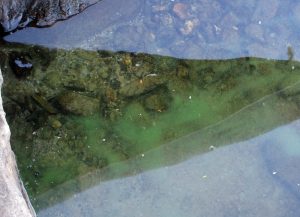
“Green Aggregations” by the shore, west side of Sandy Lake
Nov 6, 2024
He showed me photos of where he had sampled. The next day, he said, it was gone.
I put some drops from the green layer under my Dissection Microscope and could just barely see the individual cells. That characteristic (very small cells) and the pattern of clumping of filaments of cells suggested to me it was a BGA (Blue Green Alga) aka “Cyanobacteria”.*
_______
*While the term BGA (Blue Green Algae) remains in common use today, these organisms are more correctly (scientifically) described not as algae but as a type of bacteria in the Phylum “Cyanobacteria“. These are photosynthetic bacteria, the light-capturing pigments sometimes giving them a blue-green colour, hence the common name. Continue reading →
